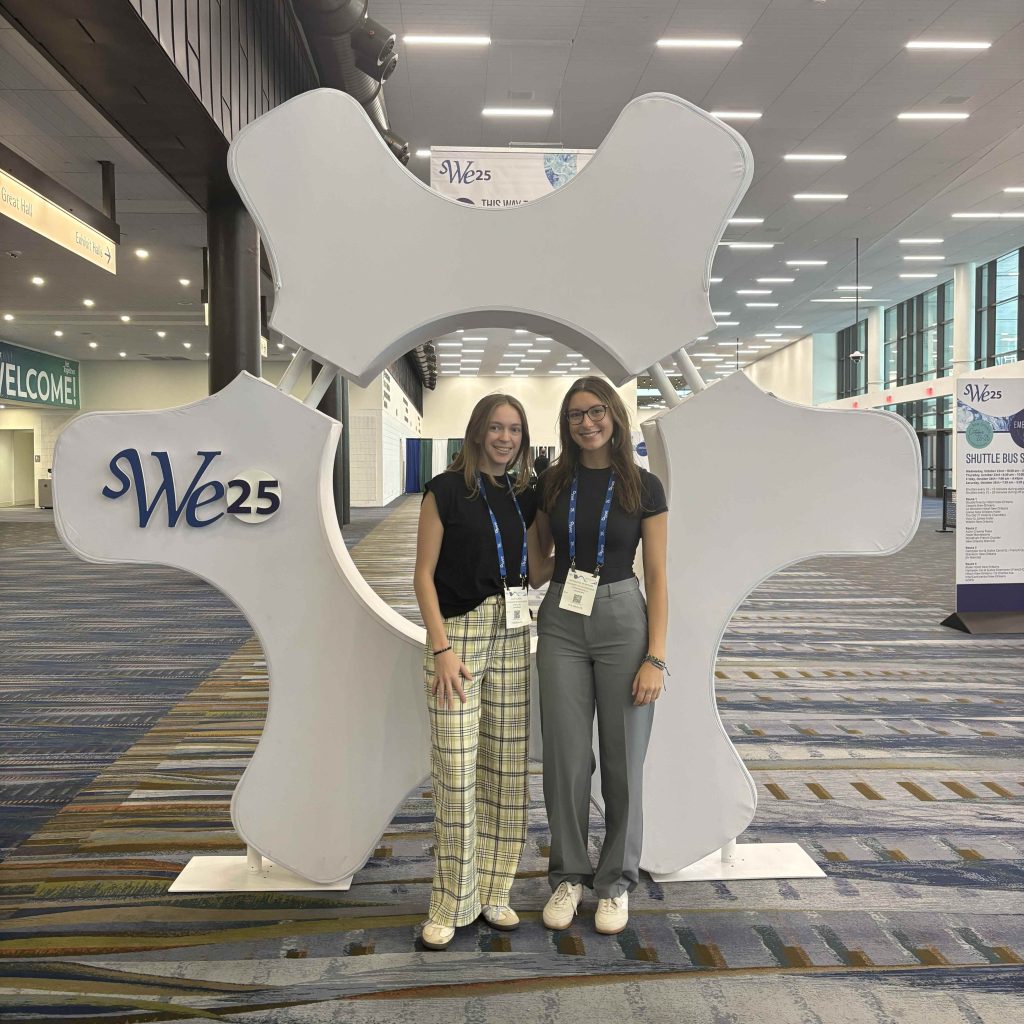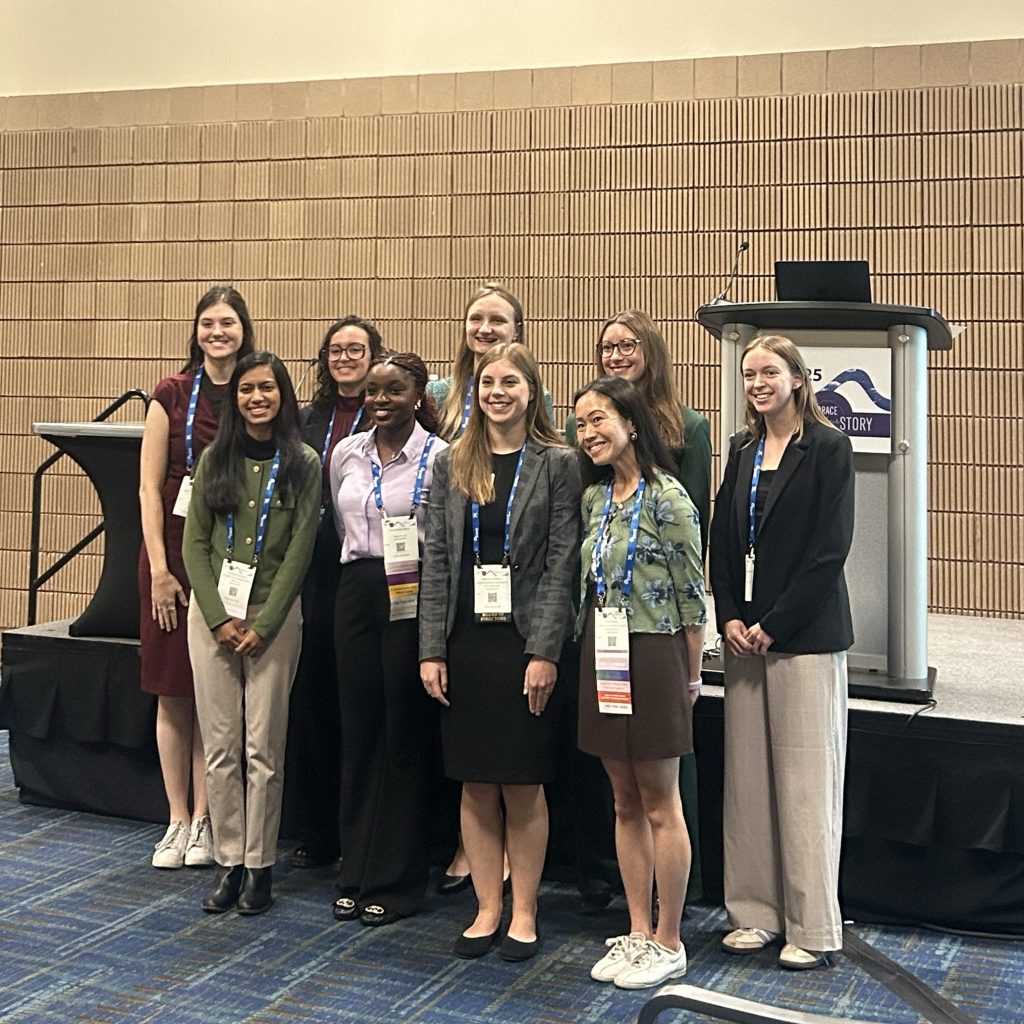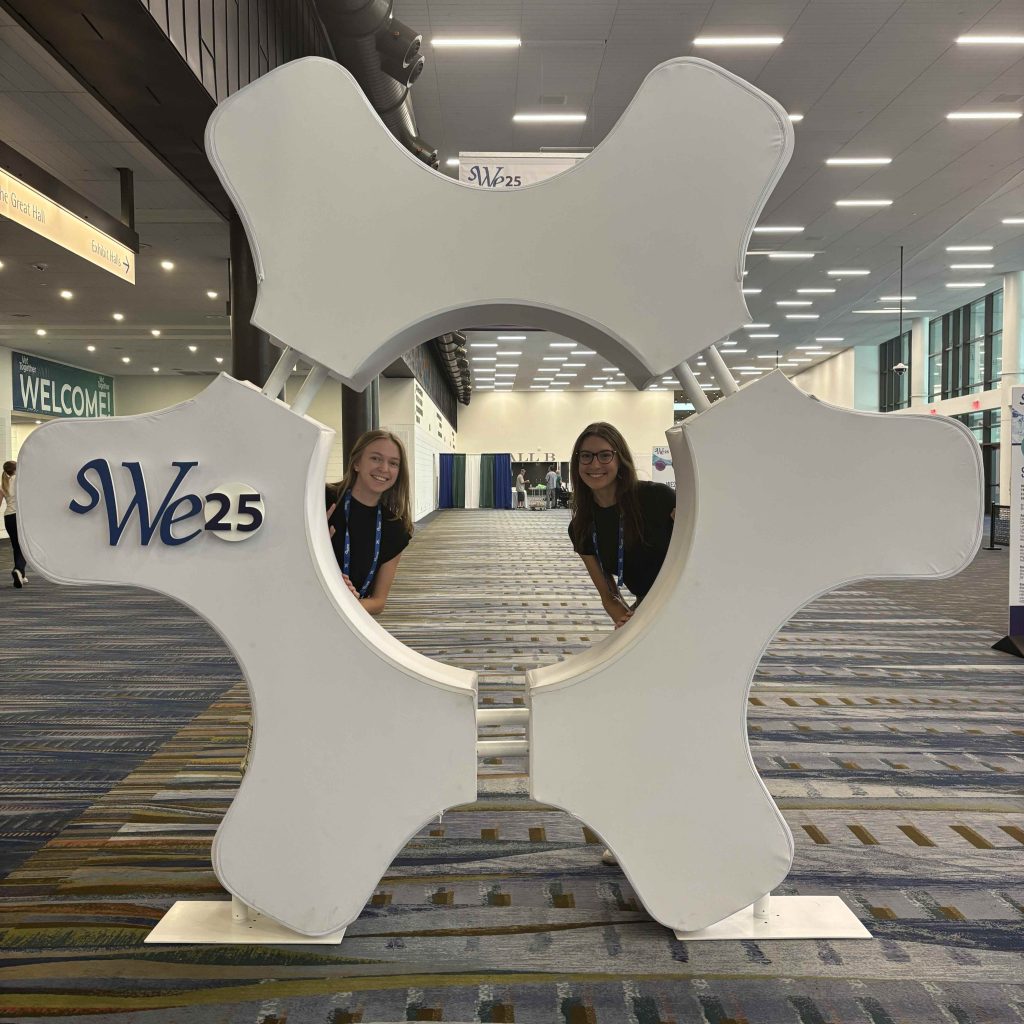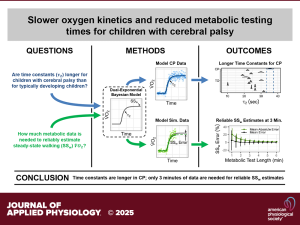We’re proud to celebrate Ally Clarke, Madeleine (Maddie) McCreary, and Alisha Bose, who attended the Society of Women Engineers Annual Conference 2025 in New Orleans!
Ally and Maddie represented the Neuromechanics & Mobility Lab in the “Rapid Fire” Collegiate Competition, showcasing their innovative research:
- Maddie’s talk: “Kicking It Off: Do toddlers with disabilities activate leg muscles when driving with a joystick?”
- Ally’s talk: “The Effect of Body Weight Support on Motor Control in Individuals with Cerebral Palsy.”
A huge congratulations to Ally for earning First Place in the SWE Collegiate Graduate Rapid Fire Competition!
We also want to recognize Alisha, an undergraduate researcher in our lab, who kicked off her role as Collegiate Working Group Chair-Elect at WE25, helped organize leadership meet-ups, represented Break Through Tech at the career fair, and even had two articles featured in SWE Magazine.
We’re thrilled to see members of our lab engaging and being recognized at this incredible event!








